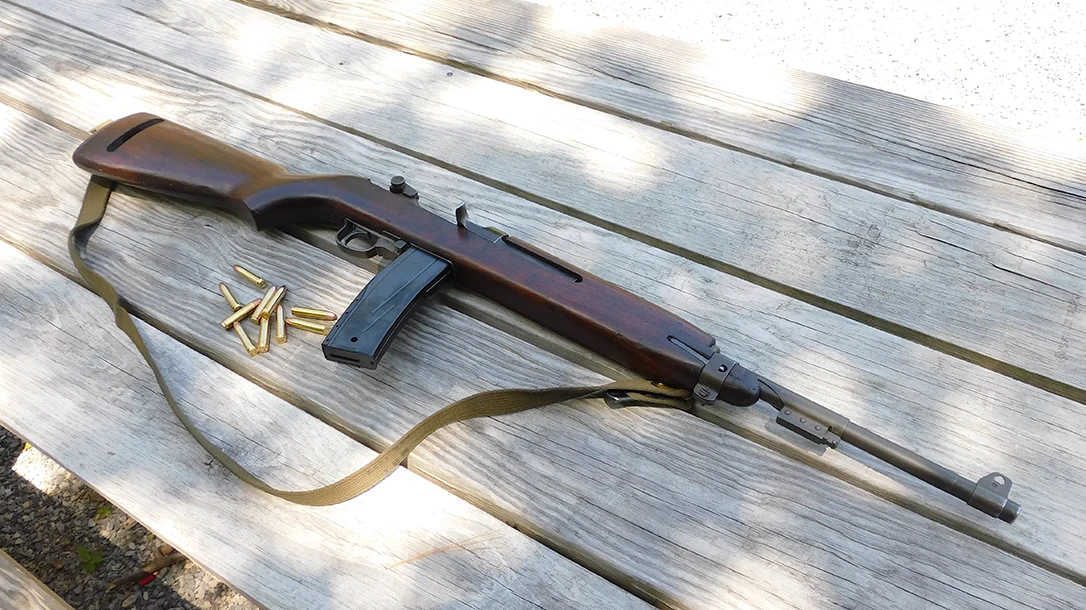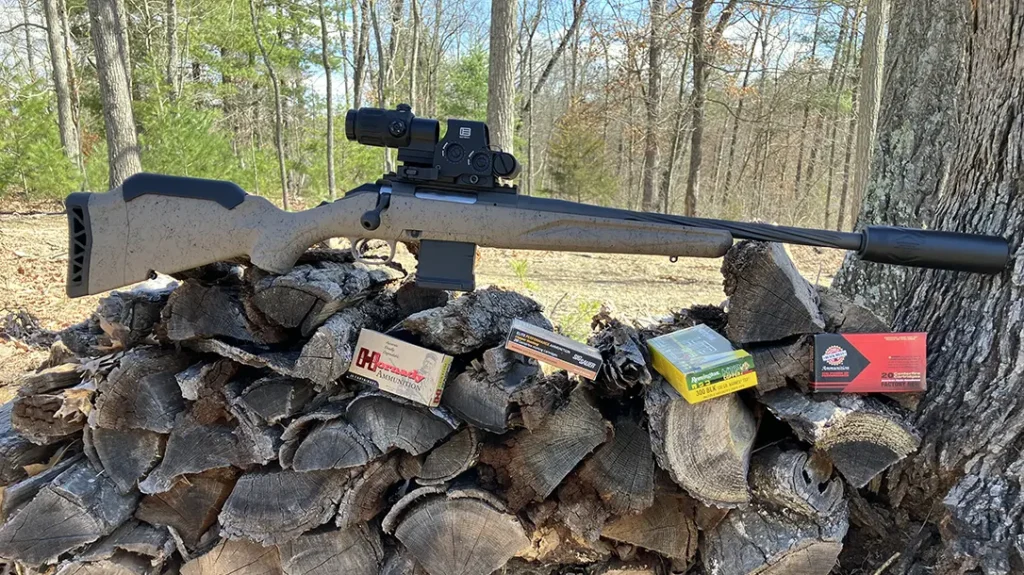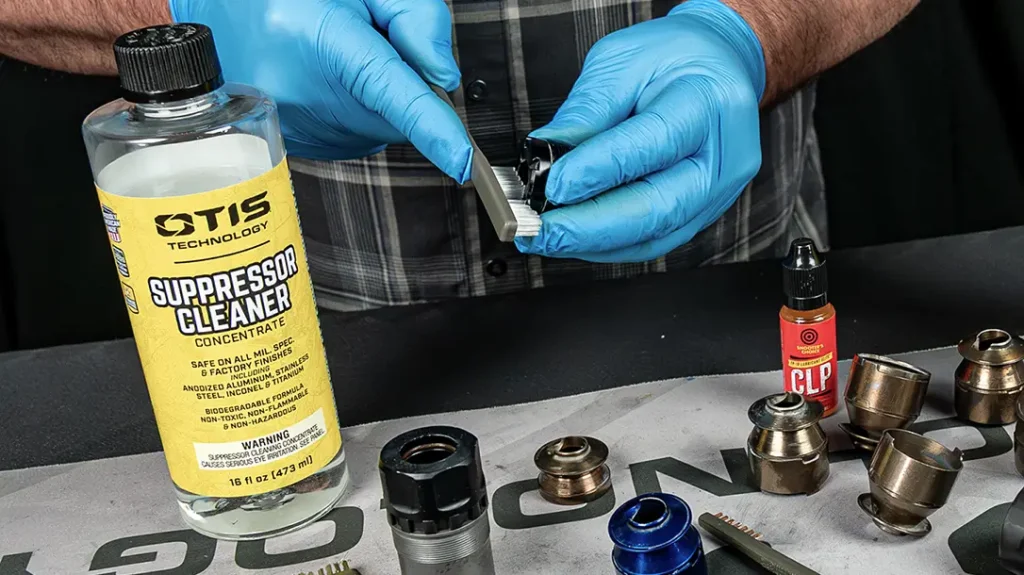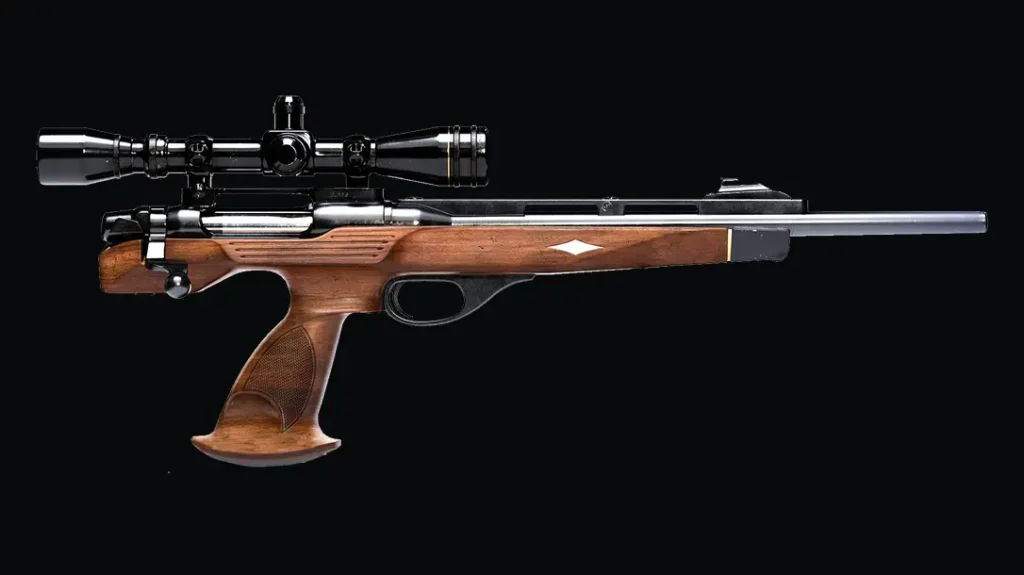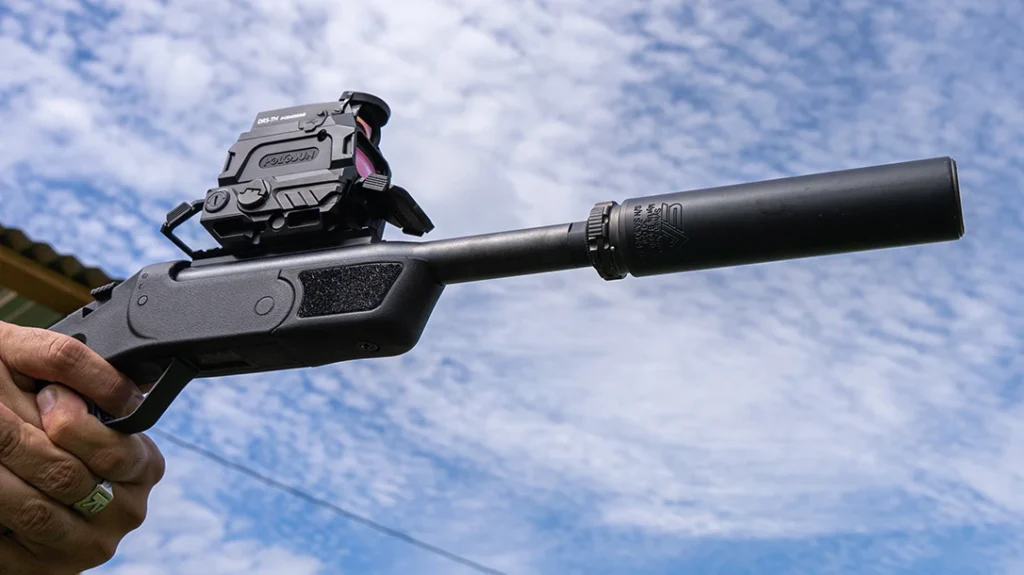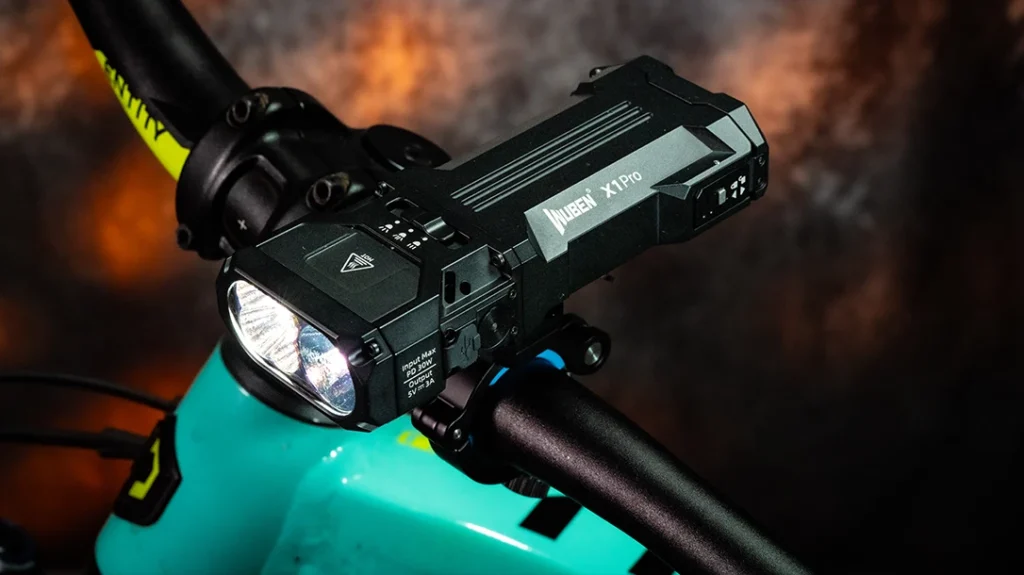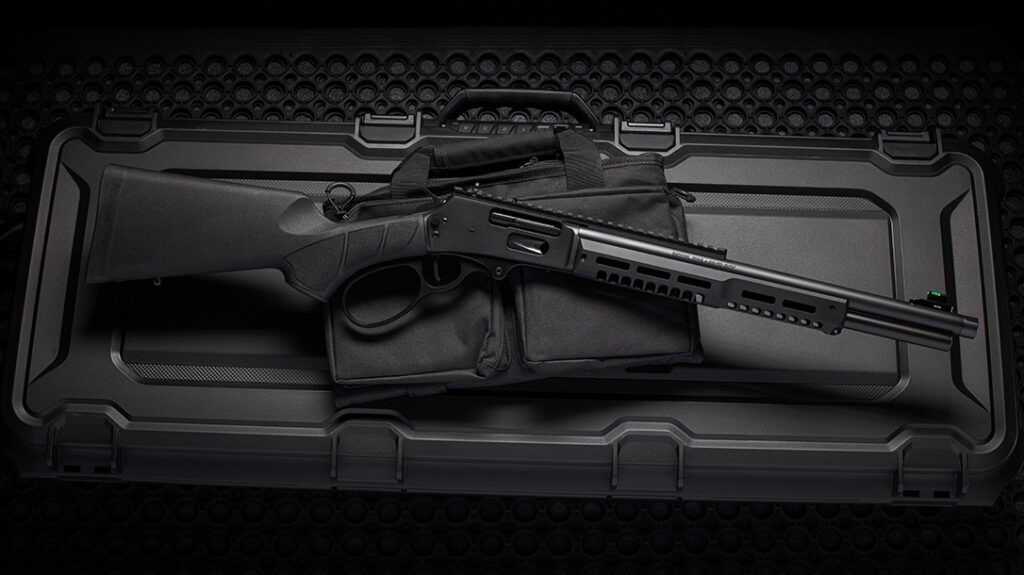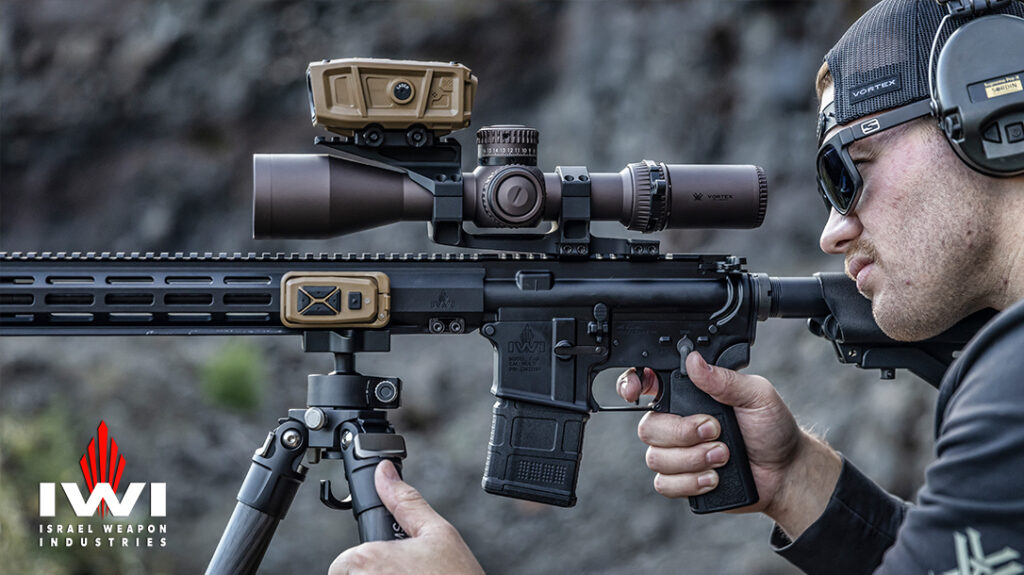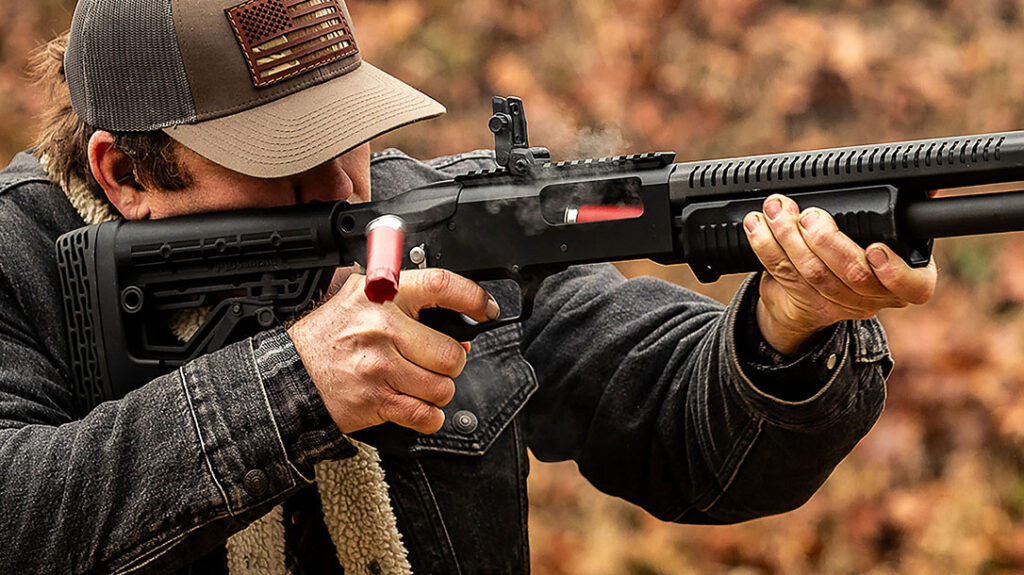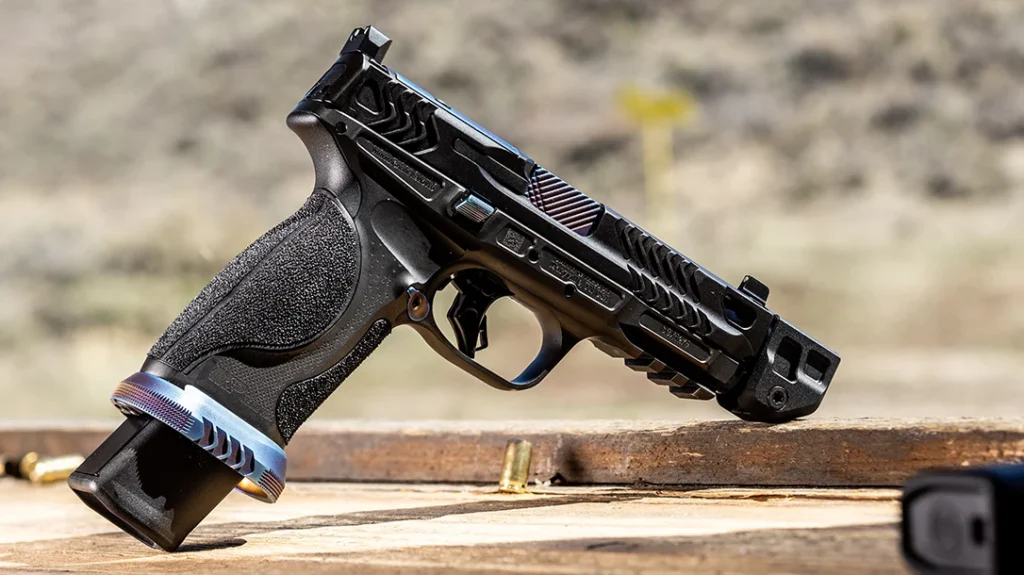The M-1 Carbine is perhaps the most misunderstood and underappreciated American small arm of World War II. Constantly, and wrongly, compared to the iconic M-1 Garand battle rifle, uninformed critics deride the Carbine as underpowered and unreliable. Both of those characterizations are incorrect. In fact, the Carbine performed its intended job so well that its role was expanded far beyond its original purpose.
The United States built some 6.6 million Carbines during World War II, more than any other small arm, including the Garand. The government shut down production in 1945 and never made another Carbine. Yet the Carbine served in Korea and Vietnam, and is still in use today, 80 years after production ceased. Let’s look at this fascinating and fun rifle and talk about why you should own one.
The American Light Rifle Program
The M-1 Carbine concept began with a study of how the Colt 1911 pistol was used in the First World War. The sad truth was that it wasn’t used at all, at least not well. Pistols are difficult to shoot effectively without the necessary practice, and few soldiers received anywhere near the training to shoot the 1911 even adequately. Even if the soldier could shoot well, the 1911 had very limited range.
Advertisement — Continue Reading Below
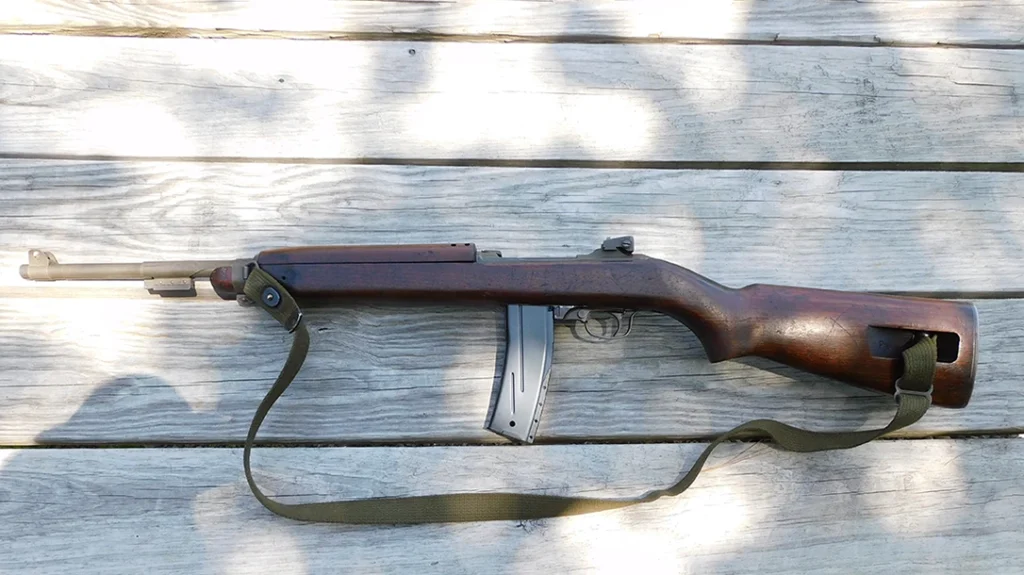
Rifles, on the other hand, are much easier to shoot accurately, even with limited practice. Rifles also have a longer range and higher muzzle velocities for better terminal performance at range. So, in 1938, the Army concluded that it needed a light rifle to equip support troops like artillerymen and truck drivers instead of the 1911. This, the Light Rifle Program was born.
The Light Rifle idea was built around a new cartridge designed for this role. American rifle designs revolved around .30 caliber ammunition, so it made sense to keep that in place for tooling and production purposes. And since the new rifle was envisioned essentially as a sidearm, the new cartridge was developed as a suped-up pistol round with a straight walled case. The Army based what became the .30 Carbine round on the .32 Winchester self-loading cartridge, which will be an important detail moving forward. So, the Light Rifle was envisioned as what we would call a pistol caliber carbine or personal defense weapon.
Advertisement — Continue Reading Below
US Light Rifle Parameters & Development
The Army Ordnance Department wasn’t interested in the Light Rifle until the fighting of 1939-40 showed the German Army’s penchant for bursting into its opponents’ rear areas with little or no warning. The need for a better personal defense weapon quickly became apparent. Submissions had to meet the following basic requirements:
- Be chambered for the .30 Carbine cartridge
- Have an effective range of at least 300 yards
- Have a semi-automatic operating system and a detachable box magazine
- Weigh 5 lbs. or less
There is some confusion over whether the Light Rifle, what would become the M-1 Carbine, should have select fire capability. Some say it was a requirement, while others say it was merely desirable. We know that the M-1 Carbine, as adopted in 1941, was not select fire, though that capability was added in 1945 in the updated M-2 Carbine.

Advertisement — Continue Reading Below
Army ordnance invited submissions for trials in 1940, but none of the test rifles was acceptable. The search continued.
Winchester & the “Carbine” Williams Myth
Winchester didn’t enter the first Light Rifle trial. But the head of Army Ordnance was touring the company’s facility in the summer of 1941, and saw their work on a .30-06 battle rifle to compete with the M-1 Garand. The rifle stood out for its light 7.5 lb. weight. Winchester was informed that Army Ordnance had no plans to replace the Garand, but a scaled-down version of their light battle rifle might be perfect for the upcoming second round of Light Rifle trials. The only problem was that the trials were 13 days away.
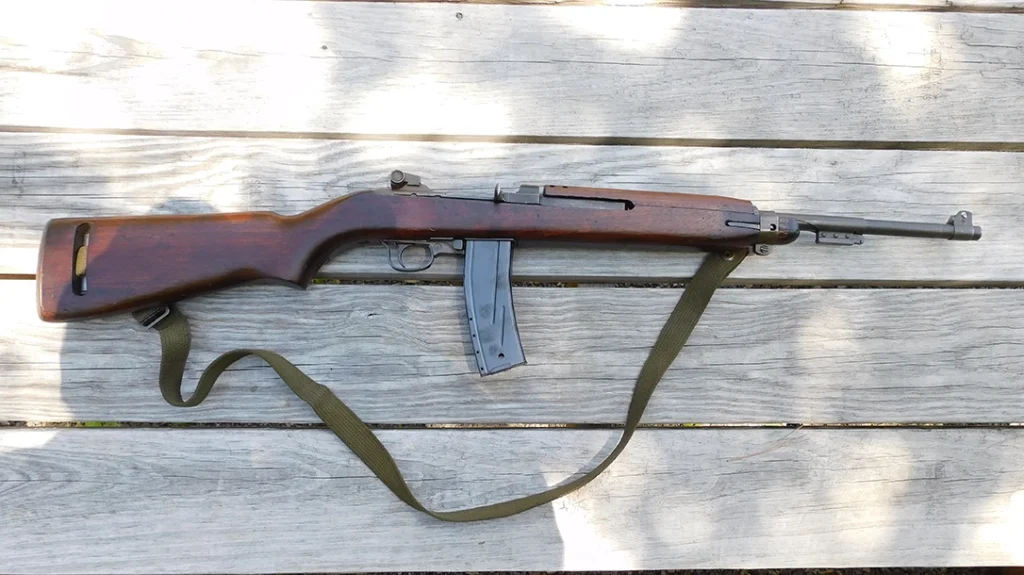
Advertisement — Continue Reading Below
Winchester assembled a team and set to work. Legend has it that gun designer David Marshall Williams ran with the project and produced a full-blown M-1 Carbine in less than two weeks. Williams is known as “Carbine” Williams to this day. There’s even a movie about him of the same name. But Williams initially wanted nothing to do with it, saying it couldn’t be done in such a short time. Even when Winchester was awarded the contract, Williams proved so difficult to work with that he was removed from the project.
“Tap It” Gas Piston
Williams did, however, contribute a key component: the short-stroke “tap it” gas piston that makes the Carbine’s operating system go. But it was an earlier design and not developed especially for the Carbine. The Winchester team benefited from other pre-existing components that they could adapt to the new rifle. Aside from Williams’ gas piston, they cut down and modified a Garand operating rod, and took the trigger mechanism, magazine well, and magazine from the Winchester Model 1905 Self-Loader. It helped that the .30 Carbine Cartridge was based on the .32 Winchester Self Loading cartridge, for which the Model 1905 was chambered. This was enough for a rough prototype.
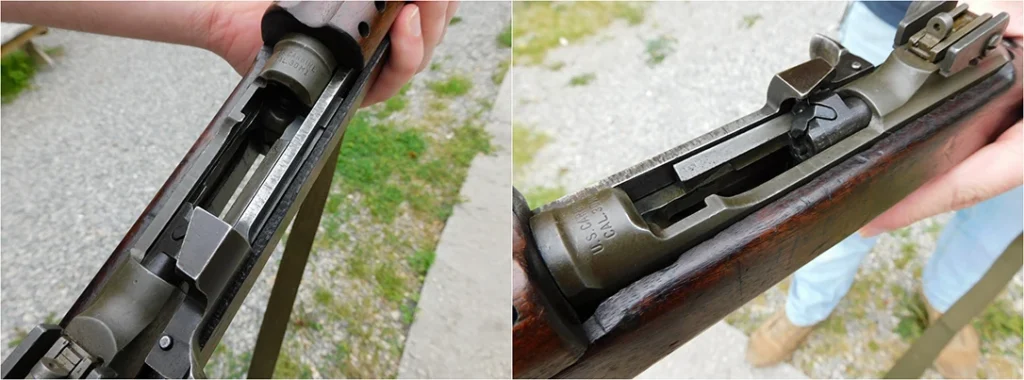
Advertisement — Continue Reading Below
The entire story is fascinating, but suffice to say that the Winchester team, led by William Roemer and Fred Humiston, barely made the deadline and their prototype won the trials. Humiston saved the project by machining a new bolt when the prototype’s bolt broke during the trials. The impressive part is that since the gun had no blueprints, Humiston machined the entire thing from memory, without being able to test or fit it in the rifle. It worked perfectly. Humiston was obviously incredibly talented. Roemer and Humiston deserve most of the credit for the M-1 Carbine, despite the legend.
All-Out Production
The M-1 Carbine was adopted in late 1941. Ten different companies produced some 6.6 million Carbines from then until 1945. World War II was a total war, requiring maximum industrial effort. Companies like IBM, National Postal Meter, Underwood Typewriters, and Rock-Ola Jukebox built M-1 Carbines, in addition to Winchester. The Inland Division of General Motors made the most, cranking out over 2 million units. IBM and Underwood made my two personal Carbines.
The Carbine was a testament to the modern production process. Companies rarely made a finished product. They made components which were shipped to central locations for final assembly. For instance, Underwood primarily made receivers and barrels. Stocks were made elsewhere. The entire process maximized efficiency by not requiring the tooling or people to do everything at every factory.
Advertisement — Continue Reading Below
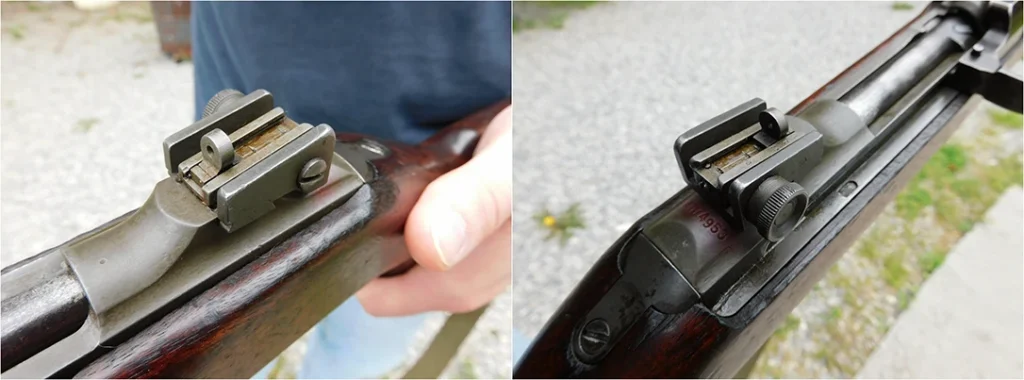
The result was a mix of features on different rifles based on parts availability. The Carbine’s bolt, rear sights, barrel band, and stock were changed during the war, but stockpiles of one part might run out before others. That means that individual examples might have some updated parts but not others. This, combined with the plethora of manufacturers, makes the Carbine very collectable.
Both of my Carbines’ serial numbers identify them as being built in the spring of 1944. Yet my IBM has the old-style rear sight, flat bolt, and narrow barrel band, while the Underwood has updated versions of all three parts. The Underwood also has a bayonet lug where the IBM does not. This may indicate that they were assembled at different locations with different parts stockpiles. I like having an example of each. I loaned my IBM Carbine to my nephew, so all the photos here are of my Underwood.
Advertisement — Continue Reading Below
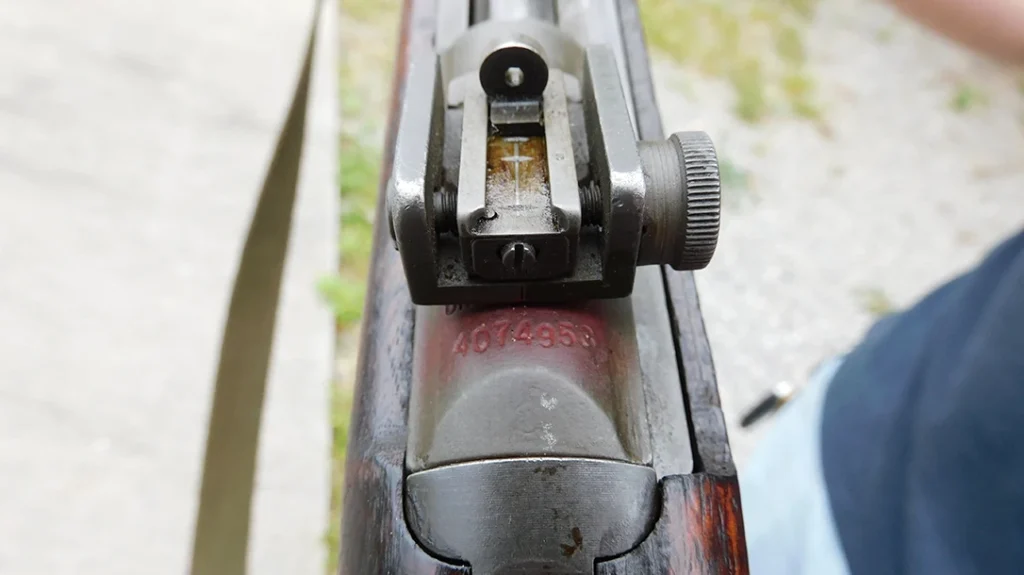
Unintended Warhorse
The M-1 Carbine was intended for truck drivers, headquarters troops, artillery and mortarmen. But the weapon’s light 5.2 lb. weight and impressive (for the time) firepower soon caught the combat arms’ attention. The lightweight .30 Carbine cartridge meant that troops could carry far more ammo, and the 15-round magazine let them use it effectively.
The new airborne divisions took special interest, resulting in the M-1A1 Carbine with a pistol grip and folding wire stock. Not all paratroopers carried the M-1A1 since not enough could be made in time, but they were very effective in that role, debuting with the 82nd Airborne’s 1943 jump into Sicily.
Advertisement — Continue Reading Below
By 1944, the Carbine was on the front lines, especially during the Battle of the Bulge where, as the Army had foreseen, German combat troops broke into the American rear areas, forcing support troops to defend themselves. The Carbine was also popular with higher-ranking officers, including 82nd Airborne commander General James Gavin, who always jumped with a standard M-1 Carbine, though he swapped it for a Garand once on the ground. Gavin’s Carbine is on permanent display at Fort Bragg’s US Army Airborne and Special Operations Museum. British Field Marshal Bernard Montgomery carried a Carbine in his personal vehicle throughout the European Campaign. Even noted firearms enthusiast Winston Churchill was said to be a big fan.
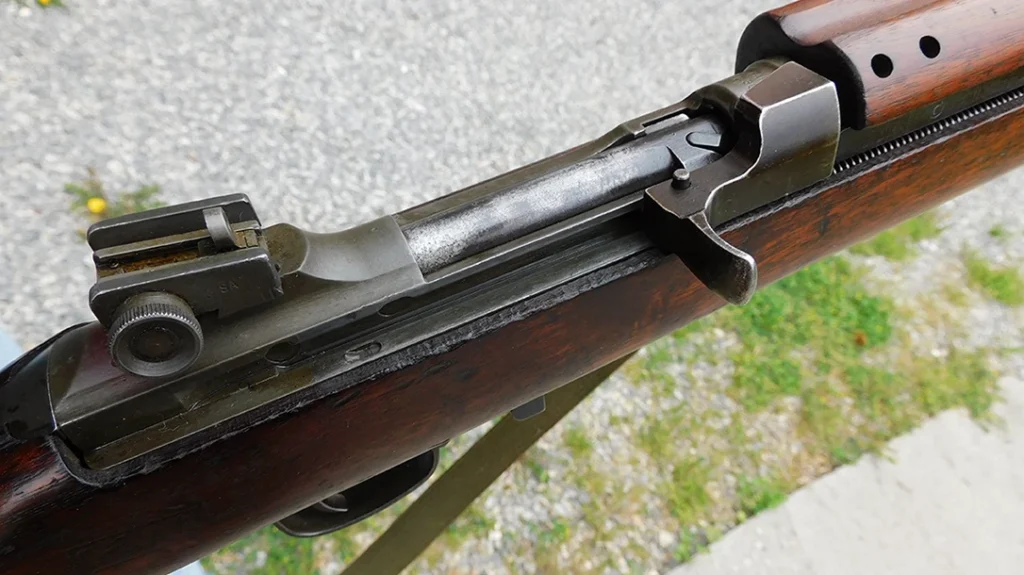
The Carbine was also popular in the Pacific, where its light weight, maneuverability, and firepower was ideal for clearing Japanese bunkers. The .30 Carbine cartridge was also non-corrosive, unlike World War II 30.06 ammo, which was a big deal in wet, humid Pacific conditions.
Reliability & Stopping Power
The M-1 Carbine developed an undeserved reputation for unreliability. It is true that Carbines suffered from stoppages more often than the Garand. But the Carbine wasn’t the problem. It was the magazines. World War II GI Carbine magazines are, quite frankly, cheap crap. They were made quickly and by the lowest bidder, as is often the case. American soldiers quickly learned that Carbine mags were throwaway items and replaced them often. This wasn’t a big deal given the American logistical system of 1944-45.
The magazine problem never really improved, unfortunately. But you can buy new, inexpensive (not cheap) mags for your Carbine that work just fine. I get my 15 and 30-round Carbine mags from KCI USA.
Korean service yielded stories that the M-1 and M-2 Carbines were underpowered. The select-fire M-2 appeared near the end of World War II but saw most of its service in Korea. Stories emerged that Carbine rounds wouldn’t effectively penetrate the heavy winter clothing worn by North Korean and Chinese troops.
Caliber Matters
That may have been the case, at least in some instances. But the problem was less with the Carbine than with how it was being used. The light weight was indeed attractive, and the Army extended the Carbine’s role a bit too far. It was never intended to replace the M-1 Garand, which was still the standard battle rifle in Korea. But far more Carbines were scattered through frontline combat units than in World War II, especially the M-2, which doubled as a submachine gun.
A light rifle firing a glorified pistol cartridge, intended to replace a pistol, can hardly be blamed for not performing like a 30.06-chambered battle rifle. That said, the Carbine had plenty of power for its intended role. The .30 Carbine cartridge, at 100 yards, exerts roughly the same energy as a .357 Magnum round does at the muzzle. That’s a solid sidearm, which, again, was the Carbine’s primary job description.
The M-2 Carbines
We noted that the select fire M-2 appeared late in World War II, in April of 1945, mainly in response to the German StG 43 and StG 44 Sturmgewehr. Few M-2s made it to Europe, though conversion kits were sent ahead and field armorers changed some M-1s to M-2s, including adding the new 30-round magazine. The M-2 saw extensive action in the Philippines and on Okinawa in 1945.
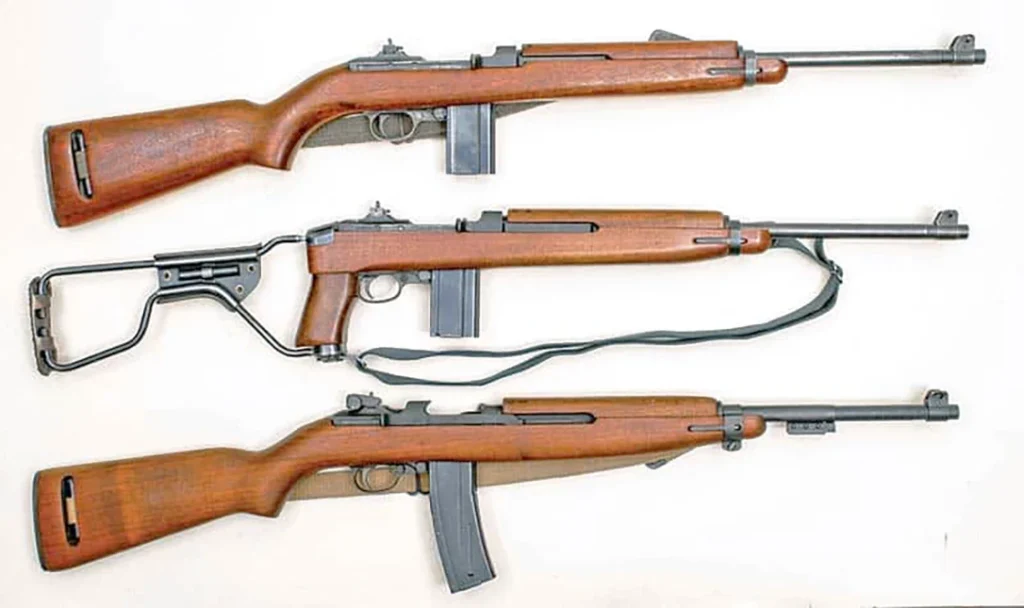
But the M-2’s greatest impact came in Korea, where it served as a submachine gun. Stories of unreliability, including runaway guns that let the entire magazine go if you dropped them, emerged. But extensive research shows that most of those claims are unsubstantiated. It seems that “eyewitness accounts” are actually accounts of what someone else told them. There may have been a few isolated incidents, likely caused by a worn out sear, but there’s no real hard proof.
The M3 Carbines
The M-3 appeared late in World War II. Also called the T-3, this Carbine was an M-2 equipped with an infrared night scope. The scopes were large and heavy, used a large backpack battery, and required a two or three-man team. The infrared images were blurry and greenish, but the scope worked. 150 specially-trained M-3 night sniper teams deployed to Okinawa against Japanese infiltrators. They were so effective that the M-3 teams reportedly accounted for about 30 percent of Japanese casualties on Okinawa.
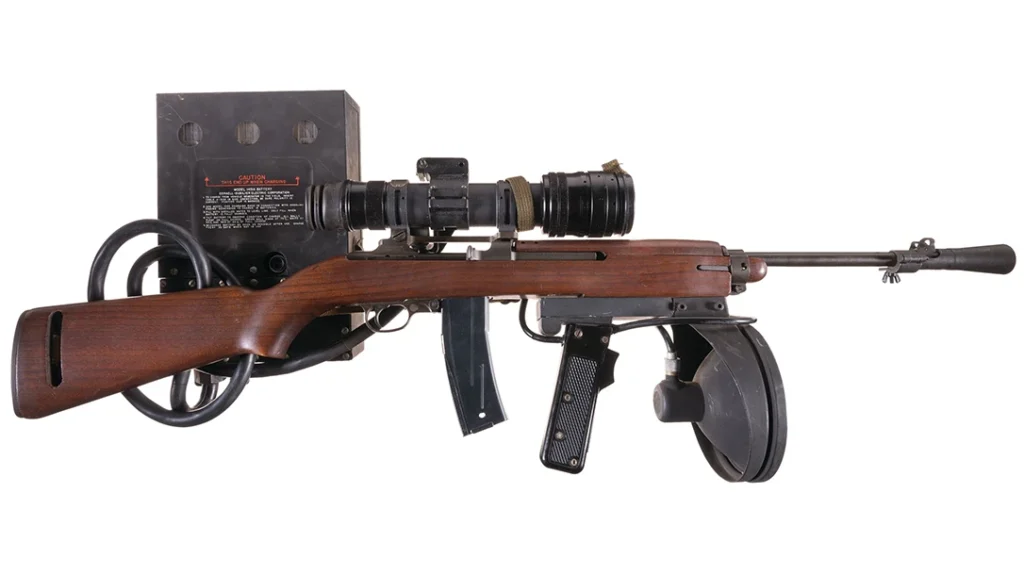
The M-2’s select fire capability saw it fill the role of America’s first “assault rifle.” The Germans introduced the Sturmgewehr during the war. The first AK-47s were issued in 1949. But America’s obsession with the battle rifle meant that US forces were behind the curve, especially after adopting the M-14. Limited numbers of obsolete M-2 Carbines filled the modern rifle role until the M-16 was adopted, some 15 years after the AK.
The M-1 Carbine Around the World
The US liberally gave M-1 Carbines away in the chaotic post-World War II environment. German and Japanese security forces carried Carbines during their rebuilding periods. Carbines also showed up in the Greek Civil War, Africa and Southeast Asia. I believe my IBM Carbine served in Ethiopia. I can’t prove it but I have my reasons. South Vietnamese forces carried thousands of Carbines in the 1950s and 60s.
Police agencies also saw the Carbine’s value. The compactness and light weight were perfect for law enforcement. It never really became a patrol rifle, as we understand the term, but it was useful.
Owning a Carbine
M-1 Carbines aren’t cheap. Military surplus is skyrocketing across the board. I’ve gotten to the point that I question paying those prices for obsolete technology. I love my Carbines but I probably won’t buy any more, unless I find a great deal on an Inland or Rock-Ola Jukebox model. Those deals are out there if you look hard enough, and I got my Underwood that way.

But I do love these guns. They are so much fun and they shoot great, if you know how to make them work right. Surplus Carbines have a reputation for failures to feed. Both of mine did that. They would occasionally not go fully into battery, requiring me to bump the charging handle. But there’s an easy fix for that. Remember that the last of these guns was built in 1945. The recoil spring is likely old and worn. But Wolff Springs offers entire spring kits for not very much money. I replaced the recoil springs on both and I’ve never had another problem.
Maintenance
You should also keep your Carbine well-lubricated. They don’t like to run dry. But that’s easy. The Carbine is so easy to disassemble that even I can do it. One screw lets you remove the barrel band, after which the stock and handguard come free and the receiver just pulls apart. It’s very easy. Use good mags. The Carbine’s mag design isn’t the greatest, but don’t use surplus mags just for nostalgia’s sake. They’re awful. Like I said, KCI mags have always run well for me.

Don’t let bad quality stocks deter you from buying an otherwise good Carbine. Most Carbines were arsenal refurbished at least once, including stock replacements. You aren’t hurting the value by changing the stock. I replaced my IBM stock for less than 50 bucks. You can easily find genuine GI stocks online.
Upgrades
You can also modernize your Carbine without altering the rifle. Ultimak offers synthetic stocks and Picatinny rail-equipped handguards for an optic. I plan to buy one soon. And swapping the stocks is so easy that you can do it if 15 minutes without damaging your Carbine. Switching back is equally simple.
Finally, be wary of reproductions. Some are alright, but most are not reliable. Some of these guns are advertised under names reminiscent of wartime manufacturers. All I can say is do your homework before buying a reproduction. Actual wartime models are better.
A Great American Firearm
The M-1 Carbine is an American warhorse. It far exceeded its original purpose, serving well in World War II, Korea, and Vietnam, as well as other conflicts around the world. It’s an iconic piece of American history.
But the Carbine is also lots of fun. It’s fun to shoot and fun to collect. The .30 Carbine ammo isn’t the cheapest, but it is available. I love my Carbines and I honestly enjoy them more than the Garand. Maybe that’s sacrilegious but it’s true. They are just so much fun and so handy.
The M-1 Carbine deserves to be preserved by gun enthusiasts. But they’re rugged enough to use. Remember, they were built for the battlefield. Just basic maintenance will keep them running for a long time. I love military surplus, and my Carbines are right at the top of my favorites list. They’re easily the most fun. Pick one up if you can. I bet you’ll agree.
